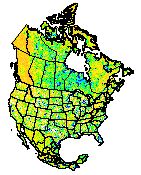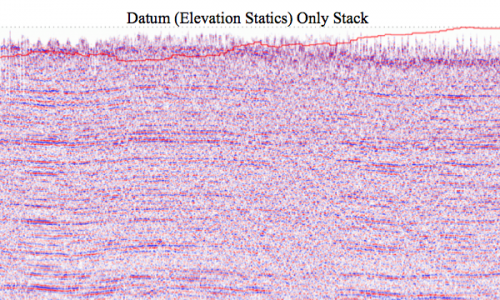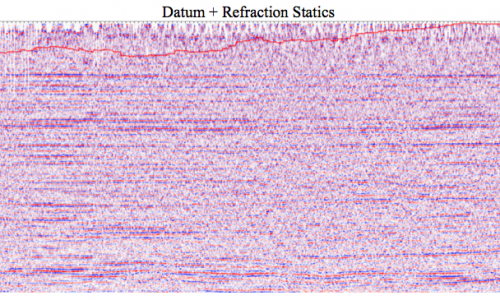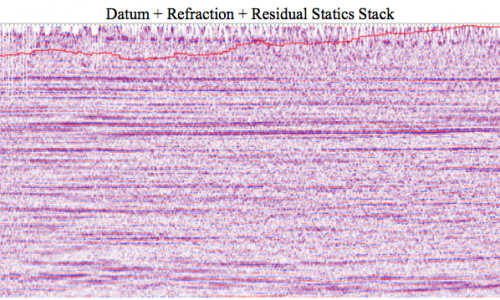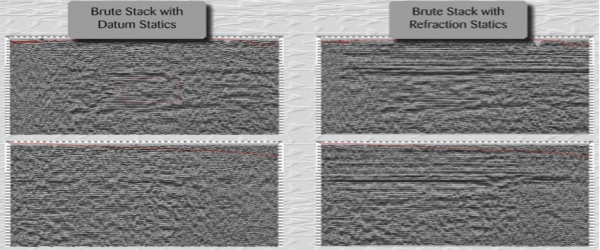 Click image to enlarge
Click image to enlarge
In many land seismic surveys, refraction statics are a key to handling near surface velocity variations. This is especially true in merging complex 3D data-sets, a specialty of Flamingo. In such cases, a velocity model is built over the entire merge area to get a consistent set of refraction statics for the merged area.
Our methodology is based on first arrival interpretation and shot based auto-picking where applicable to build geologically sound models from which long and short wave-length statics are derived. We sincerely believe that extra time and care needs to be taken at this stage by using an interpretation approach versus a generic picking method.
Datum (Elevation Statics) Only Stack
Datum + Refraction Statics
Datum + Refraction + Residual Statics Stack
All data-sets are examined from a preliminary model evaluation by qualified and experienced personnel. Prior information is used when available (i.e. velocity surveys and well ties). Our basic refraction software is based on generalized linear inversion tomography and delay time algorithms.
A Research & Development Group is available to build proprietary solutions based on our clients needs. Our refraction team is experienced with land, transition and shallow marine model building and refraction statics applications over most world-wide basins. An example of a complex merge consisted of 41 individual 3D volumes spanning approximately 3,500 square miles into one seamless volume with one overall refraction solution. It consisted of 485,744 source points; 1,641,517 receiver locations; 6686 receiver lines for 6,255,207 stacked bins.

